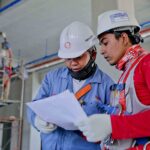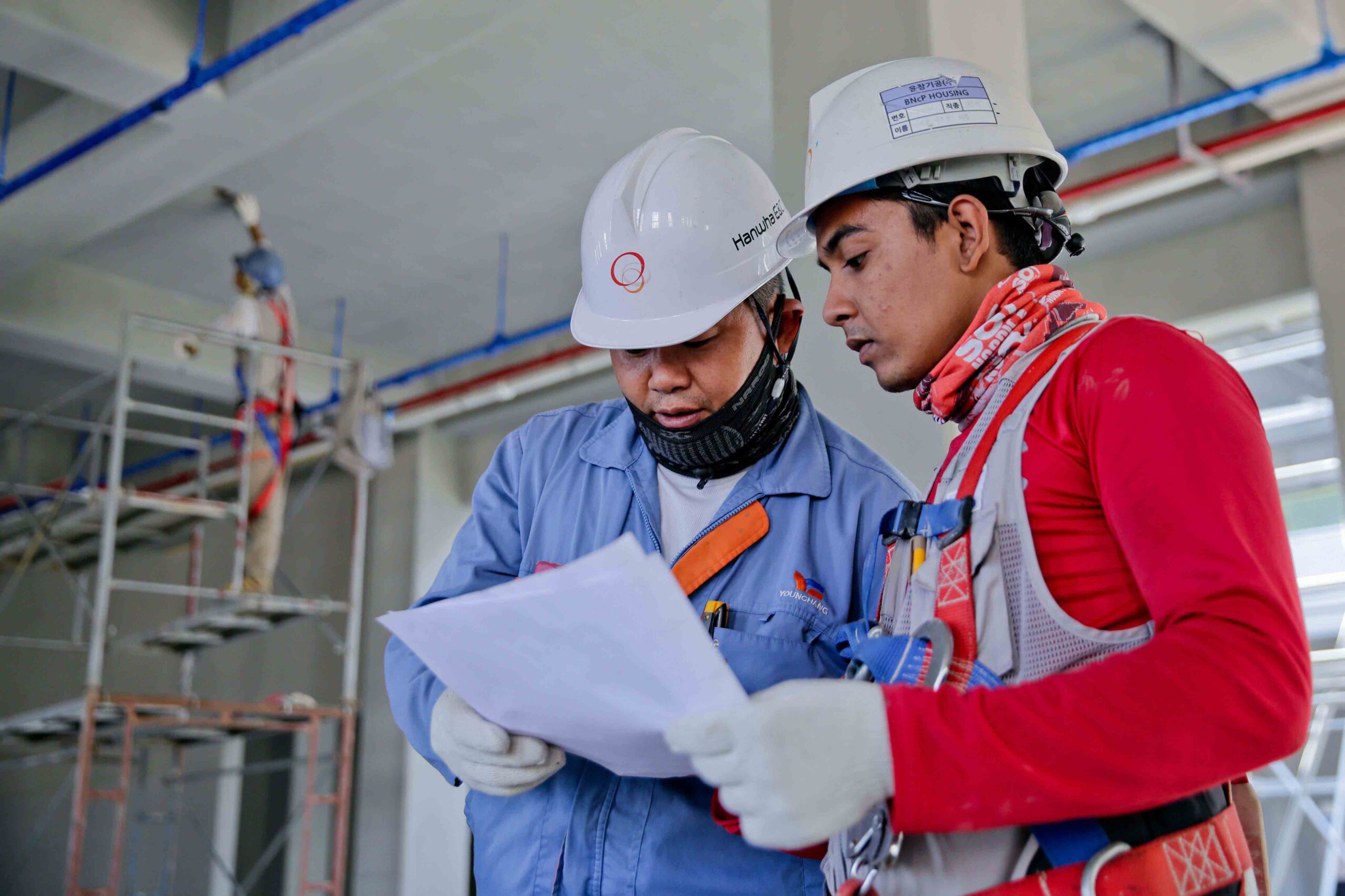Beyond Static Models: Rethinking Team Assessments
For HR advisors, incubators, and investors, team assessments are a vital tool. They help identify strengths, mitigate risks, and ensure alignment. But most assessments fall into one of two categories:
- Personality-Based Models (MBTI, Insights, Hogan, Management Drives) – Great for understanding individuals but offer little insight into team dynamics.
- Role-Based Models (Belbin, TeamEffectiveness, Predictive Index) – Useful for structuring teams but too rigid to adapt as companies grow.
The problem? Teams aren’t static—they evolve.
A startup team needs fast-moving innovators, while a scale-up requires structured execution power. A corporate team, on the other hand, needs leadership depth and cross-functional alignment. Most assessments fail to capture this growth-phase shift—and that’s where TeamAnalyser is different.
The TeamAnalyser Difference: A Three-Dimensional Approach
Rather than relying on static categories, TeamAnalyser introduces a three-dimensional model that ensures teams are built for long-term success, not just short-term fit:
- Superpowers vs. Roles – What people do under pressure matters more than their job title
Most assessments define people by roles, but roles change—a product owner might shift to sales, a founder might step aside. Superpowers, however, remain constant.
At TeamAnalyser, we map:
- How individuals naturally contribute to team growth (pioneer, builder, stabilizer, etc.).
- Who thrives in uncertainty vs. who needs structure.
- Who stretches too far beyond their natural strengths—and risks burnout.
A misalignment between roles and superpowers leads to inefficiency—but when aligned, teams operate at full potential.
- Individual vs. Team Perception – Closing the self-awareness gap
One of the biggest risks HR advisors, investors, and incubators face is relying on self-reported data.
TeamAnalyser doesn’t just measure how someone sees themselves—it cross-references this with:
- How their team experiences them (are they truly a leader, or just perceived as one?).
- How they function in high-pressure situations (do they adapt, or revert to old habits?).
- Who might be overestimating their ability to flex into new roles.
Traditional assessments don’t account for perception gaps—which is often where the biggest risks and opportunities lie.
- Growth-Phase Alignment – Right people, right time
Most team assessments assume that what works today will work tomorrow. But teams evolve—and failing to adjust kills momentum.
Through the ASP Model (ambitions, superpowers, performance), TeamAnalyser shows:
- Which strengths matter most at each phase—from validation to scale-up to corporate.
- Who might be a great fit now but a bottleneck later.
- Where gaps in leadership, execution, or innovation will emerge as the company scales.
Context Matters: why growth speed & phase alignment are critical
One of the biggest blind spots in traditional assessments is the lack of contextual awareness. A team may seem functional on paper but could be completely misaligned with the company’s growth trajectory.
How TeamAnalyser determines growth phase:
- Founders and leadership teams self-assess their current phase based on core business metrics (revenue, product maturity, market traction, organizational complexity).
- These inputs are cross-referenced with our algorithm-driven growth phase model, which accounts for indicators like premature scaling risks.
- The final phase identification is visually mapped—allowing companies to see their real-time alignment.
The results? A clear, data-backed view of whether a team is built for the current phase—or already outgrowing itself.
HOW TEAMANALYSER COMPARES TO TRADITIONAL TOOLS
Model Type | Example Tools | Strengths | Weaknesses | Why TeamAnalyser is Different |
Personality-Based | MBTI, Hogan, Insights, Management Drives | Deep insight into individual traits | No real-time team dynamics or growth tracking | Measures self-image vs. team perception for more accurate insights |
Role-Based | Belbin, TeamEffectiveness | Helps define team roles | Rigid frameworks that don’t adapt over time | Focuses on real-time team dynamics, not static roles |
HR/Org Planning | 9-Box Grid, Predictive Index | Good for long-term planning | Lacks agility for fast-changing teams | Fast, actionable insights—a Team Scan in just 90 minutes |
KEY TAKEAWAYS: WHY HR ADVISORS, INCUBATORS, AND INVESTORS CHOOSE TEAMANALYSER
- Superpowers Over Roles – Ensures people contribute where they naturally thrive, reducing misalignment.
- Self-Perception vs. Team Feedback – Prevents blind spots in leadership, execution, and team cohesion.
- Growth-Phase Alignment – Matches team composition to where the company is headed, not just where it is today.
- Context-Based Team Evolution – Uses real-time phase assessment to ensure teams grow at the right speed.
- Fast & Actionable – A complete Team Scan in 90 minutes, with real-time feedback loops for continuous improvement.
THE BOTTOM LINE: TEAMS THAT DON’T ADAPT, FAIL
Companies don’t fail because of bad ideas—they fail because their teams don’t evolve at the right time.
TeamAnalyser helps HR advisors build better teams, incubators back the right founders, and investors de-risk their portfolios by ensuring leadership and execution align with business growth.
Is your team—or the teams you support—built for their next growth phase?
🔹 Book a demo
🔹 Try the Team Scan
🔹 See GrowthGuides in action
Beyond Static Models: Rethinking Team Assessments
For HR advisors, incubators, and investors, team assessments are a vital tool. They help identify strengths, mitigate risks, and ensure alignment. But most assessments fall into one of two categories:
- Personality-Based Models (MBTI, Insights, Hogan, Management Drives) – Great for understanding individuals but offer little insight into team dynamics.
- Role-Based Models (Belbin, TeamEffectiveness, Predictive Index) – Useful for structuring teams but too rigid to adapt as companies grow.
The problem? Teams aren’t static—they evolve.
A startup team needs fast-moving innovators, while a scale-up requires structured execution power. A corporate team, on the other hand, needs leadership depth and cross-functional alignment. Most assessments fail to capture this growth-phase shift—and that’s where TeamAnalyser is different.
The TeamAnalyser Difference: A Three-Dimensional Approach
Rather than relying on static categories, TeamAnalyser introduces a three-dimensional model that ensures teams are built for long-term success, not just short-term fit:
1. Superpowers vs. Roles – What people do under pressure matters more than their job title
Most assessments define people by roles, but roles change—a product owner might shift to sales, a founder might step aside. Superpowers, however, remain constant.
At TeamAnalyser, we map:
- How individuals naturally contribute to team growth (pioneer, builder, stabilizer, etc.).
- Who thrives in uncertainty vs. who needs structure.
- Who stretches too far beyond their natural strengths—and risks burnout.
A misalignment between roles and superpowers leads to inefficiency—but when aligned, teams operate at full potential.
2. Individual vs. Team Perception – Closing the self-awareness gap
One of the biggest risks HR advisors, investors, and incubators face is relying on self-reported data.
TeamAnalyser doesn’t just measure how someone sees themselves—it cross-references this with:
- How their team experiences them (are they truly a leader, or just perceived as one?).
- How they function in high-pressure situations (do they adapt, or revert to old habits?).
- Who might be overestimating their ability to flex into new roles.
Traditional assessments don’t account for perception gaps—which is often where the biggest risks and opportunities lie.
3. Growth-Phase Alignment – Right people, right time
Most team assessments assume that what works today will work tomorrow. But teams evolve—and failing to adjust kills momentum.
Through the ASP Model (ambitions, superpowers, performance), TeamAnalyser shows:
- Which strengths matter most at each phase—from validation to scale-up to corporate.
- Who might be a great fit now but a bottleneck later.
- Where gaps in leadership, execution, or innovation will emerge as the company scales.
Context Matters: why growth speed & phase alignment are critical
One of the biggest blind spots in traditional assessments is the lack of contextual awareness. A team may seem functional on paper but could be completely misaligned with the company’s growth trajectory.
How TeamAnalyser determines growth phase:
- Founders and leadership teams self-assess their current phase based on core business metrics (revenue, product maturity, market traction, organizational complexity).
- These inputs are cross-referenced with our algorithm-driven growth phase model, which accounts for indicators like premature scaling risks.
- The final phase identification is visually mapped—allowing companies to see their real-time alignment.
The results? A clear, data-backed view of whether a team is built for the current phase—or already outgrowing itself.
HOW TEAMANALYSER COMPARES TO TRADITIONAL TOOLS
| Model Type | Example Tools | Strengths | Weaknesses | Why TeamAnalyser is Different |
|---|---|---|---|---|
| Personality-Based | MBTI, Hogan, Insights, Management Drives | Deep insight into individual traits | No real-time team dynamics or growth tracking | Measures self-image vs. team perception for more accurate insights |
| Role-Based | Belbin, TeamEffectiveness | Helps define team roles | Rigid frameworks that don’t adapt over time | Focuses on real-time team dynamics, not static roles |
| HR/Org Planning | 9-Box Grid, Predictive Index | Good for long-term planning | Lacks agility for fast-changing teams | Fast, actionable insights—a Team Scan in just 90 minutes |
KEY TAKEAWAYS: WHY HR ADVISORS, INCUBATORS, AND INVESTORS CHOOSE TEAMANALYSER
- Superpowers Over Roles – Ensures people contribute where they naturally thrive, reducing misalignment.
- Self-Perception vs. Team Feedback – Prevents blind spots in leadership, execution, and team cohesion.
- Growth-Phase Alignment – Matches team composition to where the company is headed, not just where it is today.
- Context-Based Team Evolution – Uses real-time phase assessment to ensure teams grow at the right speed.
- Fast & Actionable – A complete Team Scan in 90 minutes, with real-time feedback loops for continuous improvement.
THE BOTTOM LINE: TEAMS THAT DON’T ADAPT, FAIL
Companies don’t fail because of bad ideas—they fail because their teams don’t evolve at the right time.
TeamAnalyser helps HR advisors build better teams, incubators back the right founders, and investors de-risk their portfolios by ensuring leadership and execution align with business growth.
Is your team—or the teams you support—built for their next growth phase?
- 🔹 Book a demo
- 🔹 Try the Team Scan
- 🔹 See GrowthGuides in action







